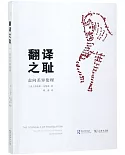Ceneral deitor’’s preface
Introduction
1 Dividing the world of discourse
1.0 Introduction
1.1 Speech and Writing
1.2 Frameworkd for classifying spoken and written modes
1.3 Applying and refining frameworks
1.4 Monologue and dialogue
1.5 Text typologies
1.6 Genres
1.7 Conclusion
Reader activities
Notes on activities
Further reading
Note
2 Observing and exploiting patterns
2.0 Introduction
2.1 Common core patterns of clause relations
2.2 Teaching suggestions
2.3 Embedded patterns
2.4 Openings and closings
2.5 The developing discourse
2.6 Thematic development
2.7 Conclusion
Reader activities
Notes on activities
Further reading
3 Linking the levels:grammar,leis and discourse
3.0 Introduction
3.1 Grammar and discourse management
3.2 Tense ,aspect and voice
3.3 Modality
3.4 Patterns of vocabulary
3.5 Naturalness
Reader activities
Notes on activities
Further reading
4 Literature,culture and language as discourse
4.0 Introduction
4.1 Conversational analysis:ptagmatics and style
4.2 Analysing narratives
4.3 Repetition and rhetoric
4.4 Situations across cultures
4.5 Text and ideology
4.6 Teaching literature with a small i
4.7 Discoures and cultural awareness
4.8 Teaching texts:curricular principles
4.9 Learning abour language:some questions for discourse analysis
Further reading
5 Designing the discourse syllabus
5.0 Introducgtion
5.1 The notion of discourse competence
5.2 Analysis and classification
5.3 Analysis as the precursor of tasks
5.4 Putting analysis into the learner context
5.5 Analysis and materials evaluation
5.6 Reflning and realizing the syllabus
Reader activities
Notes on activities
Further reading
Bibliography
Index




























